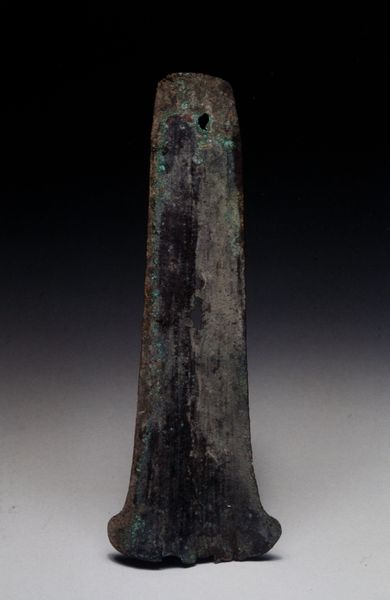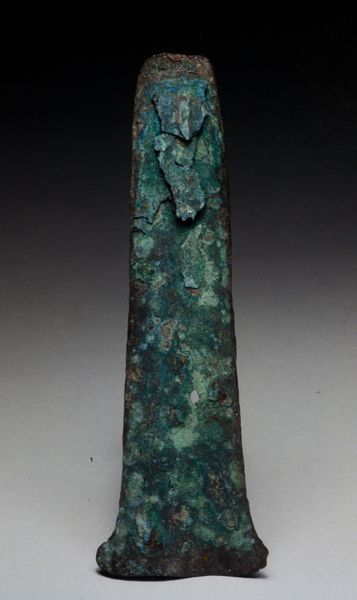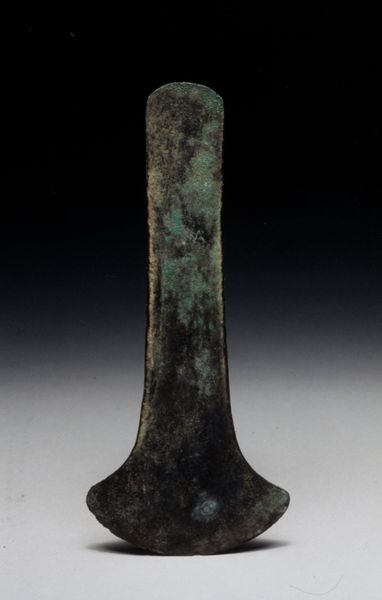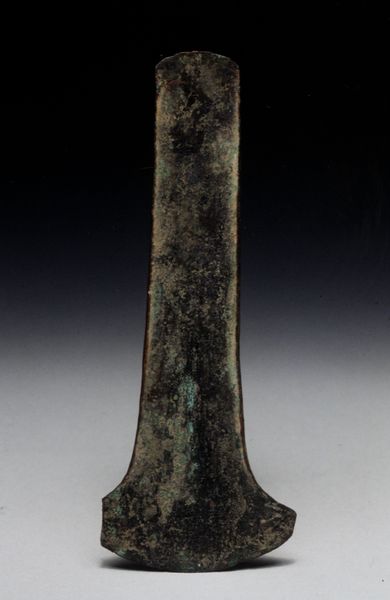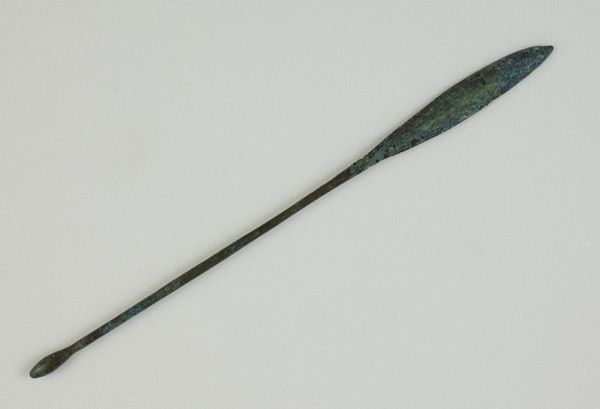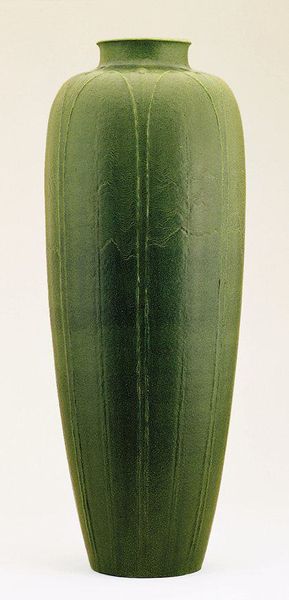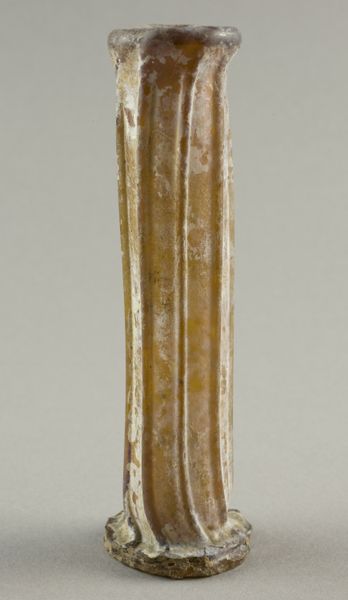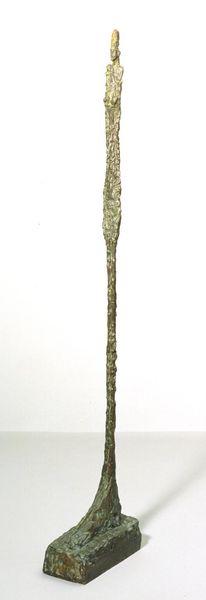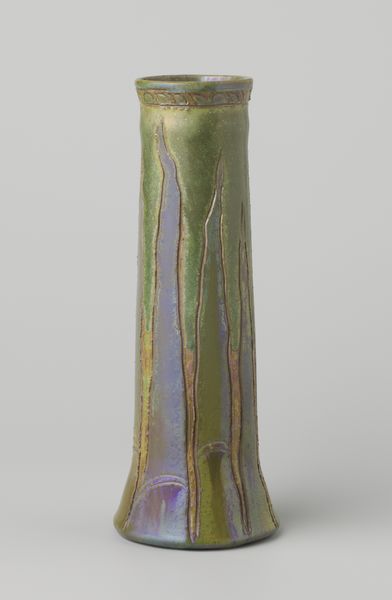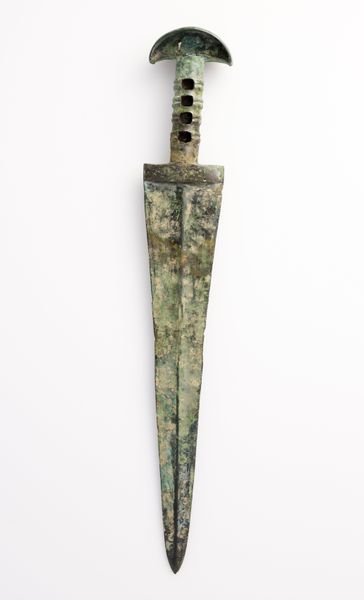
Dimensions: object: 1480 x 280 x 320 mm, 77 kg
Copyright: © Bowness, Hepworth Estate | CC-BY-NC-ND 4.0 DEED, Photo: Tate
Curator: Before us stands Dame Barbara Hepworth's "Single Form (Eikon)," a bronze sculpture held within the Tate Collections. Editor: Immediately, I'm struck by its imposing verticality, an almost primal form reaching skyward with that textured, verdigris surface. Curator: The rough-hewn base anchors the sleek, tapering form above, creating a visual dialogue between mass and line, solidity and aspiration. Note how Hepworth uses subtle curves to animate what could be a static shape. Editor: And yet, this "single form" speaks volumes about Hepworth's postwar vision, doesn't it? A symbol of resilience, perhaps, given its creation amidst societal upheaval. Its starkness also reads as quite masculine. Curator: That’s an interesting reading, but what truly captivates me is the artist’s attention to the surface. It seems to absorb and reflect light in a way that defies its solidity. Editor: I suppose we both find our own narratives reflected in this singular object. Curator: Indeed. It's a testament to Hepworth's skill that such a simple form can provoke so much thought.
Comments
tate 8 months ago
⋮
http://www.tate.org.uk/art/artworks/hepworth-single-form-eikon-t00697
Join the conversation
Join millions of artists and users on Artera today and experience the ultimate creative platform.
tate 8 months ago
⋮
The original of this bronze was a carved plaster column set on a wooden base. The plaster was sent to Paris in 1938 for an exhibition and remained there until 1961. In 1963 Hepworth had it cast in an edition of seven. By the mid 1930s Hepworth had turned from carving semi-naturalistic figures and animals to an exploration of pure sculptural forms. She has written that her interest then centred on the relationship between a form and its surrounding space as well as its integral size, texture and weight. But these sculptures almost always retained an organic character. Gallery label, August 2004
